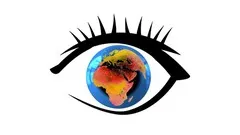
Sexing the Canvas: Art and Gender 
This course explores how art and gender intersect, examining some of the world's most beloved paintings with the help of expert curators and art historians. Through this course, students will gain a deeper understanding of how gender is represented in art and how to interpret masterpieces in a gendered context. ▼
ADVERTISEMENT
Course Feature
![]() Cost:
Cost:
Free
![]() Provider:
Provider:
Coursera
![]() Certificate:
Certificate:
Paid Certification
![]() Language:
Language:
English
![]() Start Date:
Start Date:
24th Oct, 2022
Course Overview
❗The content presented here is sourced directly from Coursera platform. For comprehensive course details, including enrollment information, simply click on the 'Go to class' link on our website.
Updated in [March 06th, 2023]
This course, Sexing the Canvas: Art and Gender, provides an opportunity to explore the intersection of art and gender. Expert curators and art historians will guide learners through some of the world’s most beloved pictures, providing a gendered reading of the masterpieces. Learners will gain an understanding of how gender and sexuality are integral to the production and reception of works of art, and how to apply gender-related theories of art history and museology to the reading and display of art and visual cultures. Through this course, learners will learn key terms from gender-related theories of art history and museology, recognize the operation of ‘the gaze’, and understand how ideas about gender and sexuality can productively be employed in theorising art curatorial practices.
[Applications]
Upon completion of this course, participants will be able to apply their knowledge of gender and sexuality to the reading and display of art and visual cultures. They will be able to recognize the operation of the gaze and how it works in relation to paintings, as well as understand key terms from gender-related theories of art history and museology. Additionally, participants will be able to increase their understanding of paintings through theories of gender and sexuality, and apply ideas about gender and sexuality to theorising art curatorial practices.
[Career Paths]
1. Art Curator: Art curators are responsible for managing and organizing collections of artwork in museums, galleries, and other institutions. They research and acquire artwork, plan and organize exhibitions, and develop educational programs. As the field of art and gender continues to grow, art curators will need to be knowledgeable about the intersection of gender and art in order to properly curate exhibitions and collections.
2. Art Historian: Art historians specialize in the study of art and its history. They research and analyze artwork, write about art, and teach classes on art history. As the field of art and gender continues to grow, art historians will need to be knowledgeable about the intersection of gender and art in order to properly research and analyze artwork.
3. Museum Educator: Museum educators are responsible for developing and delivering educational programs in museums and other cultural institutions. They create educational materials, lead tours, and develop programs for visitors of all ages. As the field of art and gender continues to grow, museum educators will need to be knowledgeable about the intersection of gender and art in order to properly develop and deliver educational programs.
4. Art Critic: Art critics are responsible for writing about and evaluating artwork. They analyze artwork, write reviews, and provide commentary on the art world. As the field of art and gender continues to grow, art critics will need to be knowledgeable about the intersection of gender and art in order to properly evaluate artwork.
[Education Paths]
1. Bachelor of Arts in Art History: A Bachelor of Arts in Art History is a great way to gain an understanding of the history of art and its relationship to gender and sexuality. This degree will provide students with the knowledge and skills to analyze and interpret works of art from a gender-related perspective. Students will also learn about the history of art, its production, and its reception. Additionally, students will gain an understanding of the theories of gender and sexuality in relation to art and visual cultures.
2. Master of Arts in Gender Studies: A Master of Arts in Gender Studies is a great way to gain an understanding of gender and sexuality in relation to art and visual cultures. This degree will provide students with the knowledge and skills to analyze and interpret works of art from a gender-related perspective. Students will also learn about the history of gender and sexuality, its production, and its reception. Additionally, students will gain an understanding of the theories of gender and sexuality in relation to art and visual cultures.
3. Doctor of Philosophy in Art History: A Doctor of Philosophy in Art History is a great way to gain an in-depth understanding of the history of art and its relationship to gender and sexuality. This degree will provide students with the knowledge and skills to analyze and interpret works of art from a gender-related perspective. Students will also learn about the history of art, its production, and its reception. Additionally, students will gain an understanding of the theories of gender and sexuality in relation to art and visual cultures.
4. Master of Arts in Museum Studies: A Master of Arts in Museum Studies is a great way to gain an understanding of the curatorial practices related to gender and sexuality in relation to art and visual cultures. This degree will provide students with the knowledge and skills to analyze and interpret works of art from a gender-related perspective. Students will also learn about the history of art, its production, and its reception. Additionally, students will gain an understanding of the theories of gender and sexuality in relation to art and visual cultures and how to apply them to curatorial practices.
The development of gender and sexuality studies in relation to art and visual cultures is an ever-evolving field. As the field continues to grow, more and more degree paths are becoming available to students interested in exploring this area of study. With the increasing availability of online courses and MOOCs, students have more opportunities than ever to gain an understanding of gender and sexuality in relation to art and visual cultures.
Pros & Cons

Gives insights on gender in art

Introduces iconic works of art

Analytical and thoughtprovoking

Introduces female subjects/sitters with agency

Introduces Indigenous Australian art

Last part about Australian Aborigen art difficult to understand

Tests too easy

Not always focused on main subject

Subtitles contain mistakes

Multiple choice questions ambiguous
Course Provider

Provider Coursera's Stats at AZClass
Sexing the Canvas: Art and Gender explores how art and gender intersect, examining some of the world's most beloved paintings with the help of expert curators and art historians. In this course, learners will understand how gender and sexuality are integral to the production and reception of works of art. Through professional curators and art historians, learners gain an understanding of key terms in gender-related theories of art history and museology, as well as the manipulation of the "gaze" and its relationship to painting. Learners will also understand how ideas of gender and sexuality can be used effectively in the theorizing of art curatorial practice and how to proactively relate theoretical ideas of gender and sexuality to the reading and presentation of art and visual culture.
Discussion and Reviews
0.0 (Based on 0 reviews)
Explore Similar Online Courses

Fundamentals of Cloud Computing and Quantum Computing

Advanced E-commerce Simplified

Python for Informatics: Exploring Information

Social Network Analysis

Introduction to Systematic Review and Meta-Analysis

The Analytics Edge

DCO042 - Python For Informatics

Causal Diagrams: Draw Your Assumptions Before Your Conclusions

Whole genome sequencing of bacterial genomes - tools and applications

A-level Sociology Revision (Short Course)

Learn What & Why of Sociology?


Start your review of Sexing the Canvas: Art and Gender